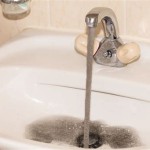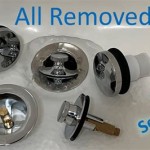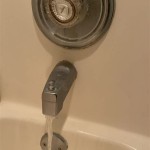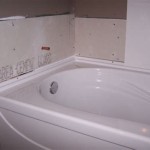Bathtub Design Ideas: Creating a Sanctuary in Your Bathroom
The bathtub, once a purely functional element, has evolved into a centerpiece of modern bathroom design. It presents an opportunity to craft a personal sanctuary, a space for relaxation and rejuvenation. From classic clawfoot tubs to sleek, contemporary soaking tubs, the options for bathtub design are vast and varied. Selecting the right bathtub and integrating it seamlessly into the bathroom’s overall aesthetic requires careful consideration of space, style, and personal preferences.
This article explores a range of bathtub design ideas, focusing on key considerations for choosing the right tub and enhancing the surrounding space to create a luxurious and functional bathroom environment. We will delve into different bathtub types, materials, and design elements that contribute to a harmonious and aesthetically pleasing bathroom. By understanding these elements, individuals can create a bathroom that meets their practical needs and provides a tranquil retreat from the stresses of daily life.
Choosing the Right Type of Bathtub
The first step in planning a bathtub-centric bathroom design is selecting the appropriate type of bathtub. This decision should be based on the available space, the desired style, and the intended usage of the tub. Different bathtub types offer distinct advantages in terms of aesthetics, functionality, and installation requirements.
Freestanding Tubs: These tubs are, as the name suggests, independent structures that are not enclosed by walls. They are often considered a design statement, adding a touch of luxury and elegance to the bathroom. Freestanding tubs come in a variety of shapes and materials, from classic clawfoot designs to modern, sculptural forms. They typically require more floor space than other types of tubs, making them suitable for larger bathrooms. The plumbing for freestanding tubs needs to be carefully planned, often requiring floor-mounted faucets or wall-mounted faucets with extended spouts.
Alcove Tubs: This is the most common type of bathtub, designed to fit into a three-walled alcove. Alcove tubs are typically rectangular and are often combined with a shower. They are a practical and space-saving option for smaller bathrooms. Alcove tubs are generally less expensive than freestanding tubs and are easier to install. They can be made from a variety of materials, including acrylic, fiberglass, and cast iron.
Drop-in Tubs: These tubs are designed to be installed within a framed structure, typically surrounded by tile or other decorative materials. Drop-in tubs offer a customizable look, allowing for integration into the overall bathroom design. They can be installed in a variety of shapes and sizes, and the surrounding deck can be used for storage or as a seating area. Drop-in tubs require more planning and installation than alcove tubs, but they offer greater design flexibility.
Corner Tubs: Designed to fit into a corner of the bathroom, these tubs are often triangular or pentagonal in shape. Corner tubs can be a good option for maximizing space in a smaller bathroom, while still providing a spacious bathing area. They can be freestanding or drop-in, and they offer a unique visual element to the bathroom design.
Japanese Soaking Tubs (Ofuro): These tubs are typically deeper and smaller than traditional Western tubs, designed for soaking in a seated position. Japanese soaking tubs are often made from wood, such as cedar or cypress, and are associated with relaxation and mindfulness. They are a good option for smaller bathrooms or for individuals who prefer a deeper soaking experience.
Exploring Different Bathtub Materials
The material of a bathtub not only affects its appearance but also its durability, heat retention, and ease of maintenance. Different materials offer distinct advantages and disadvantages, and the choice of material should be based on individual preferences and practical considerations.
Acrylic: Acrylic tubs are lightweight, durable, and relatively inexpensive. They are resistant to scratches and stains, and they retain heat well. Acrylic tubs are also available in a wide range of shapes and sizes. One of the main advantages of acrylic is its ability to be molded into complex shapes, allowing for unique and ergonomic designs. The non-porous surface of acrylic also makes it easy to clean and maintain.
Fiberglass: Fiberglass tubs are the most affordable option, but they are also the least durable. Fiberglass is a lightweight material that can be easily molded into different shapes. However, it is prone to scratching and staining and does not retain heat well. Fiberglass tubs are often reinforced with a gel coat to improve their durability, but they are still less resistant to damage than acrylic or cast iron.
Cast Iron: Cast iron tubs are known for their durability and excellent heat retention. They are heavy and expensive, but they can last for decades with proper care. Cast iron tubs are typically coated with enamel, which can be susceptible to chipping. However, cast iron's ability to retain heat makes it a popular choice for those who enjoy long, luxurious baths. The weight of cast iron requires careful planning for floor support.
Copper: Copper tubs offer a unique and luxurious aesthetic. Copper is a naturally antimicrobial material and is excellent at retaining heat. Copper tubs are expensive and require special care to prevent tarnishing. The patina that develops on copper over time can add to its unique character. They are a statement piece.
Stone Resin: These tubs are made from a composite material that combines natural stone with resin. Stone resin tubs are durable, heat-retentive, and offer a sleek, modern look. They are available in a variety of colors and textures. Stone resin provides a luxurious feel and a long-lasting surface.
Enhancing the Bathtub Surroundings
The design of the bathtub surroundings is just as important as the bathtub itself. Creating a cohesive and relaxing atmosphere requires careful consideration of the surrounding surfaces, lighting, and accessories. The goal is to create a space that is both functional and aesthetically pleasing.
Tile Selection: The choice of tile can significantly impact the overall look and feel of the bathroom. Consider using waterproof or water-resistant tiles around the bathtub to prevent water damage. Popular options include ceramic, porcelain, and stone tiles. The color and texture of the tile can be used to create different moods, from a calming spa-like atmosphere to a vibrant and energetic space. Larger tiles can minimize grout lines, making the area easier to clean. Consider using accent tiles or mosaics to add visual interest.
Lighting: Proper lighting is essential for creating a relaxing and functional bathroom. Consider using a combination of ambient, task, and accent lighting. Ambient lighting provides overall illumination, while task lighting is used for specific activities, such as shaving or applying makeup. Accent lighting can be used to highlight architectural features or artwork. Dimmable lights allow for adjusting the lighting to suit different moods and activities. Recessed lighting, sconces, and pendant lights are all popular options for bathroom lighting.
Storage Solutions: Adequate storage is crucial for keeping the bathroom organized and clutter-free. Consider incorporating built-in shelves, cabinets, or niches around the bathtub to store toiletries, towels, and other bathroom essentials. Floating shelves can provide a minimalist look, while recessed niches offer a seamless and integrated storage solution. A stylish bath caddy can hold books, candles, or drinks while you relax in the tub.
Accessories: The right accessories can add the finishing touches to the bathroom design. Consider adding a comfortable bath mat, soft towels, and luxurious bath products. A small side table can provide a convenient place to set down a drink or a book. Plants can add a touch of nature and freshness to the space. Scented candles or diffusers can create a relaxing and inviting atmosphere. Consider incorporating personal touches, such as artwork or photographs, to make the bathroom feel more personal and welcoming.
Ventilation: Proper ventilation is essential for preventing moisture buildup and mold growth in the bathroom. Ensure that the bathroom has a functioning exhaust fan to remove excess moisture after showering or bathing. Consider opening a window to allow fresh air to circulate. Good ventilation will help to maintain a healthy and comfortable bathroom environment.
By carefully considering the type of bathtub, the material, and the surrounding design elements, individuals can create a bathroom that is both functional and beautiful. The bathtub can be transformed from a purely utilitarian fixture into a focal point of relaxation and rejuvenation, enhancing the overall quality of life.
:strip_icc()/IHD_RedDeer_FINAL-032-1024x683-5e0dae47ae974c5ea76c22c00cc08c83.jpeg?strip=all)
20 Bathtub Ideas For A Beautiful Bathroom Design

99 Stylish Bathroom Design Ideas Remodel Inspiration

Beautiful Bathtub Design Ideas For Your Bathroom Designcafe

Bathtub Design Ideas Guaranteed To Make A Splash Architectural Digest

28 Small Bathroom Ideas With Bathtubs For 2024 Remodel Shower Makeover

70 Bathroom Decorating Ideas Pictures Of Budget Decor

68 Best Bathroom Design Ideas 2024 Top Designer Bathrooms

21 Bathroom Remodel Ideas That Will Give You Major Inspiration

50 Amazing Bathroom Bathtub Ideas Угловая ванна Дизайн ванной Небольшие ванные комнаты

48 Amazing Bathroom Design Ideas
Related Posts








